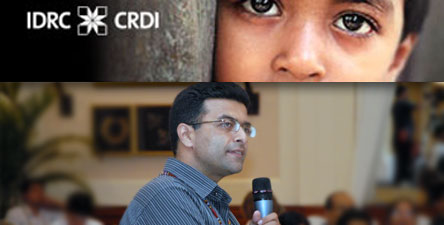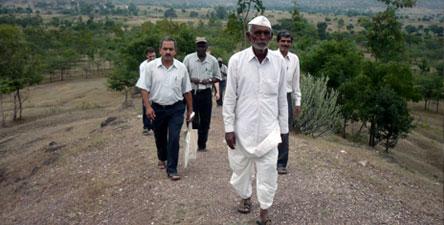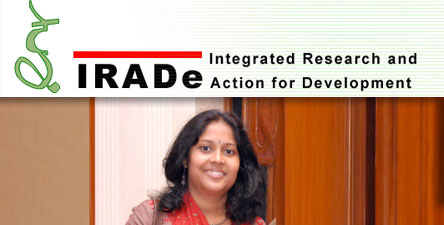About
As urbanisation brings about sweeping changes across peri-urban landscapes in South Asia, there are alarming impacts on land and water use. This is further accentuated by climate change that is expected to alter water availability for the future. As more agricultural lands are acquired from peripheral areas to cater to the increasing demand for housing in large cities, the lives and livelihoods of the poor, marginalised and other vulnerable communities undergo grave stress. These diverse impacts of urbanisation, and its implications for peri-urban water uses and the conflicts envisaged therein for the different users, needs in depth understanding and analysis and in turn should translate into effective policy actions.
AsThe project hopes to bring the researched issues to the fore, thereby creating a dialogue-based platform where policy-makers and other stakeholders in the project could be involved in order to provide feasible and practical interventions through capacity building at the local level. The dialogues with stakeholders to discuss and deliberate upon the nuances of uneven development common in this region, will also serve as a medium for change at the policy levels. The project will also throw light on how people respond/adapt to these changes in their immediate environment, through sustained research and studies.
Main Research Objective:
-
To understand the implications of urbanization processes for water access and use in peri-urban locations in four select research sites in South Asia and to examine water related vulnerability, adaptation and resilience of different social groups in the context of climate change
Specific Objectives:
-
To understand decreased water availability, competition and conflict as a result of urbanisation and to draw out the implications of this for vulnerability and variability in the context of climate change
-
To examine how different social groups, women and men, respond and adapt to increased water stress – as shaped by a mix of technology and institutions - and what strategies they employ to cope with or adapt to the situation
-
To assess and evaluate the cost effectiveness of technical and institutional alternatives that facilitate adaptation and/or build resilience in communities at risk to climate change
-
To identify avenues for collaboration with a wide range of stakeholders who are engaged at the peri-urban interface, and to find out the institutional gap in adequately addressing the situation
The Project is located at the peri-urban areas of the following four South Asian cities:
Khulna, Bangladesh
A southern metropolis of Bangladesh, Khulna is the third largest city of the country. Located on the banks of Rupsha and Bhairab rivers in south-west Bangladesh, it has been identified as one of the 15 most vulnerable cities under climate change impact. Increased salinity in the groundwater due to sea water intrusion is leading to an acute water crisis in the urban and peri-urban areas. Since urban wastewater gets diverted to peri-urban areas and surrounding rivers, the flood water is also heavily polluted with urban wastes. Major surface water bodies are now water logged or extinct due to encroachment and solid waste dumping. The municipal corporation is now trying to import water from peri-urban areas of the city, which may hamper access of the peri-urban people to local water sources and their traditional rights to local resources. Water-related health problems and diseases are on the rise.
Gurgaon, India
Gurgaon’s growth has been led and characterized by the real estate boom since the 1990s. Several factors have contributed to the growth of the city; most importantly, the proximity to the national capital—Delhi, located about 32 km away. Steady population growth is exerting stress, both on the surface and groundwater supplies. Scientists at Central Ground Water Authority have been warning that Gurgaon's water table has been declining at a rate of about two meters every year since 2006 and at this rate the city will have no water left by 2017. Supply augmentation by the urban planning authorities have either been by building water treatment plants to supply water to the city or by tapping groundwater resources for urban, industrial and residential purposes. In the latter case, competition increases directly for groundwater, while in the former, peri-urban residents lose access to water indirectly as the water treatment plants are built on the lands acquired from them. Since rights to water are tied to rights in land, they also lose access to water sources (tubewells, village ponds) located on those lands.
Hyderabad, India
Hyderabad has experienced growth of new residential colonies, sprawling out in the direction of newly developing industrial, educational and research centres, and along high value lands and lines of highest accessibility. However, this development has proved to be quite unsustainable and has turned out to be a serious threat to the city and its environs. The urban heat island effect has been thus, aggravated and in turn affected basic amenities especially water supply for the increasing population in the newly developing areas. Being located in an area with hard-rock aquifer, Hyderabad has very limited percolation while water drawn from the aquifer far exceeds the amount that is actually recharged. The present rate of access to water varies over socio-economic and physical terrain in the localities chosen for the study. With privatization of water and tariffs being same for commercial and domestic use and differential water access to large residential complexes and residences of the lower socio-economic classes, a conflict is anticipated in the core and newly developing peripheries of Hyderabad.
Khatmandu, Nepal
The urban fringes around the core areas of the city of Kathmandu, known for production and supply of food grains and vegetables to the city has undergone rapid changes due to urbanization and conversion of agricultural lands into residential dwellings. The increasing magnitude of water being transported from the rural and peri-urban areas to the city through informal water markets has also resulted in reduction of supply for domestic and agricultural uses and accelerated degradation of traditional water management systems in rural areas. The whole equation of demand and supply of water from rural to urban areas is expected to change with the increasing climatic variability and uncertainty. This will not only intensify pressure and competition for available water resources in peri-urban areas, but also limit the access and availability of water for use by these dwellers, generating a concern and possibility of conflict in the future owing to unequal access.









